The Ultimate Guide to Light Exercise

In today's hectic world, finding time to exercise can be challenging. However, regular physical activity is essential for maintaining overall health and well-being. Light exercise is an accessible and effective way to incorporate movement into your daily routine without needing intense workouts or expensive equipment. This article explores the concept of light exercise, its various types, and its numerous benefits. We'll also discuss the best equipment for light exercise.
What is Light Exercise?
Light exercise refers to physical activities that are low in intensity and can be sustained for a long time without causing excessive fatigue or strain on the body. Unlike moderate or vigorous exercise, light exercise doesn’t significantly increase your heart rate or make you sweat. It’s a gentle form of movement that can be easily integrated into your daily life, making it ideal for beginners, seniors, or those with limited mobility.
Types of Light Exercise
Depending on your preferences and physical abilities, there are several types of light exercise you can engage in. Some popular options include:
- Walking: Taking a leisurely stroll around your neighborhood, in a park, or on a treadmill is one of the simplest and most accessible forms of light exercise. It’s low-impact, easy on the joints, and suitable for all ages.
-
Yoga: Gentle yoga practices, such as Hatha or restorative yoga, focus on slow, controlled movements and deep breathing. These practices can improve flexibility, balance, and mental well-being without putting excessive strain on the body.

- Tai Chi: This ancient Chinese practice combines slow, fluid movements with deep breathing and meditation. It’s known for its stress-reducing effects and ability to improve balance and coordination.
- Swimming: Engaging in a leisurely swim or water aerobics class is an excellent way to incorporate light exercise into your routine. The buoyancy of the water supports your body, reducing the impact on your joints and muscles.
-
Cycling: Going for a casual bike ride around your neighborhood or on a designated cycling path is a fun and enjoyable way to engage in light exercise. It’s low-impact and can be easily adjusted to your fitness level.

Benefits of Light Exercise
Light exercise may not leave you breathless or drenched in sweat, but its impact on your overall health is profound. Regular light physical activity can lead to numerous positive changes in your body and mind.
Cardiovascular Health: Light exercise is beneficial for your cardiovascular system. Activities like walking, swimming, or cycling at a leisurely pace help strengthen your heart muscle and improve blood circulation. Over time, this can significantly lower your risk of developing serious conditions such as heart disease and stroke.
Mental Well-being: Light exercise has a remarkable effect on mental health. When you move your body, even at a gentle pace, your brain releases endorphins, which are natural mood elevators. These endorphins help reduce stress, anxiety, and depression, leaving you feeling more relaxed and emotionally balanced.
Increased Energy Levels: While it may seem counterintuitive, expending energy through physical activity can actually increase your energy levels. Light exercise enhances your body’s ability to produce ATP (adenosine triphosphate), the primary energy currency of your cells. It also improves sleep quality, contributing to increased daytime alertness and vitality.
Improved Mobility and Flexibility: Activities like yoga and tai chi involve gentle stretching and controlled movements that can gradually increase your range of motion. Consistent practice lubricates your joints, makes your muscles more pliable, and enhances the elasticity of your connective tissues. This improved mobility reduces your risk of injuries and falls, especially as you age.
Weight Management: Light exercise plays a valuable role in weight management. Every movement you make throughout the day contributes to your total daily energy expenditure. By incorporating light exercise into your routine, you incrementally increase the number of calories you burn. Over time, these effects can add up, making it easier to maintain a healthy weight or gradually shed excess pounds.
Best Equipment for Light Exercise
When considering equipment for light exercise, the walking pad emerges as an exceptionally practical choice, particularly for those constrained by limited living or working spaces. Unlike bulky exercise machinery, walking pads are designed for simplicity and ease of use, accommodating a natural walking pace. Their slim, foldable design allows for discreet storage under furniture or in small closets, making them ideal for apartment dwellers or office workers seeking to integrate more movement into their routines.
The convenience of a walking pad extends beyond its physical attributes. It enables users to maintain an active lifestyle regardless of external conditions such as bad weather or busy schedules. For those who spend much of their day seated, having the ability to walk in place at any time can significantly counteract the effects of prolonged sedentariness. The walking pad’s adaptability makes it suitable for a wide range of users, from beginners to those maintaining their fitness levels. With adjustable speed settings and user-friendly interfaces, walking pads cater to individual fitness needs, allowing for gradual increases in activity intensity.
Conclusion
Light exercise is a powerful yet accessible tool for improving your overall health and well-being. Whether you choose to walk, practice yoga, swim, or cycle at a relaxed pace, incorporating these activities into your daily routine can lead to numerous physical and mental benefits. From strengthening your heart and boosting your mood to increasing your energy levels and enhancing your mobility, even gentle physical activity can have a profound impact on your quality of life. A walking pad is a convenient and versatile tool that can help you incorporate more movement into your daily life, regardless of your fitness level or living space.









